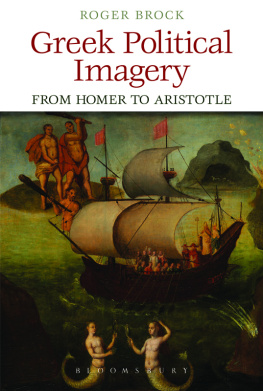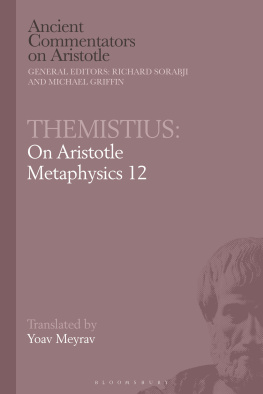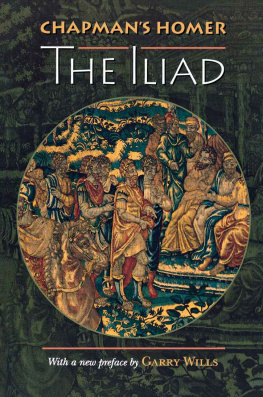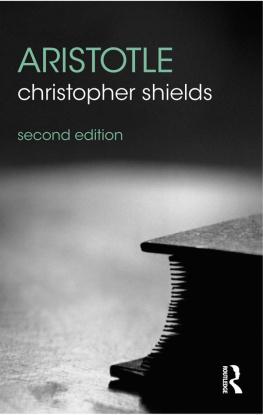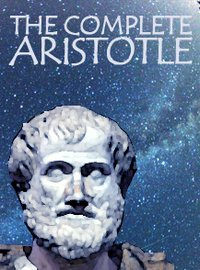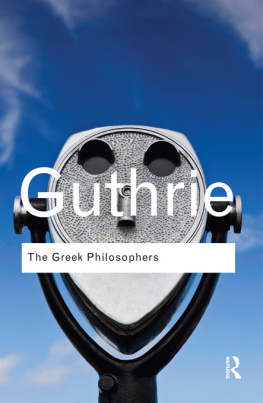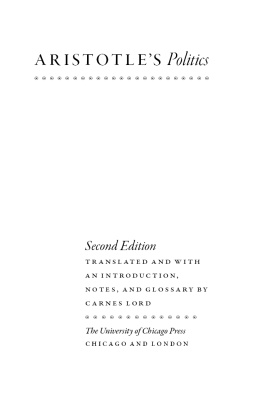Brock - Greek Political Imagery from Homer to Aristotle
Here you can read online Brock - Greek Political Imagery from Homer to Aristotle full text of the book (entire story) in english for free. Download pdf and epub, get meaning, cover and reviews about this ebook. City: Greece, Griechenland., Greece, year: 2013, publisher: Bloomsbury Academic, genre: Religion. Description of the work, (preface) as well as reviews are available. Best literature library LitArk.com created for fans of good reading and offers a wide selection of genres:
Romance novel
Science fiction
Adventure
Detective
Science
History
Home and family
Prose
Art
Politics
Computer
Non-fiction
Religion
Business
Children
Humor
Choose a favorite category and find really read worthwhile books. Enjoy immersion in the world of imagination, feel the emotions of the characters or learn something new for yourself, make an fascinating discovery.
Greek Political Imagery from Homer to Aristotle: summary, description and annotation
We offer to read an annotation, description, summary or preface (depends on what the author of the book "Greek Political Imagery from Homer to Aristotle" wrote himself). If you haven't found the necessary information about the book — write in the comments, we will try to find it.
Brock: author's other books
Who wrote Greek Political Imagery from Homer to Aristotle? Find out the surname, the name of the author of the book and a list of all author's works by series.
Greek Political Imagery from Homer to Aristotle — read online for free the complete book (whole text) full work
Below is the text of the book, divided by pages. System saving the place of the last page read, allows you to conveniently read the book "Greek Political Imagery from Homer to Aristotle" online for free, without having to search again every time where you left off. Put a bookmark, and you can go to the page where you finished reading at any time.
Font size:
Interval:
Bookmark:

Bloomsbury Academic
An imprint of Bloomsbury Publishing Plc
50 Bedford Square | 175 Fifth Avenue |
London | New York |
WC1B 3DP | NY 10010 |
UK | USA |
www.bloomsbury.com
First published 2013
2013 Roger Brock
All rights reserved. No part of this publication may be reproduced or transmitted in any form or by any means, electronic or mechanical, including photocopying, recording, or any information storage or retrieval system, without prior permission in writing from the publishers.
Roger Brock has asserted his right under the Copyright, Designs and Patents Act, 1988, to be identified as Author of this work.
No responsibility for loss caused to any individual or organization acting on or refraining from action as a result of the material in this publication can be accepted by Bloomsbury Academic or the author.
British Library Cataloguing-in-Publication Data
A catalogue record for this book is available from the British Library.
ISBN: 978-1-47250-217-9
Library of Congress Cataloging-in-Publication Data
Brock, Roger.
Greek political imagery from Homer to Aristotle / Roger Brock.
pages cm
Includes bibliographical references and index.
ISBN 978-1-78093-206-4 (hardback) -- ISBN 978-1-4725-0217-9 (epub) -- ISBN 978-1-4725-0218-6 (epdf) 1. Greek literature--History and criticism. 2. Classical literature--History and criticism. 3. Politics in literature. 4. Politics and literature--Greece. 5. Imagery (Psychology)--Political aspects. 6. Greece--Politics and government--Early works to 1800. I. Title.
PA3015.P63B76 2013
880.9'358--dc23
2013000816
Typeset by Fakenham Prepress Solutions, Fakenham, Norfolk NR21 8NN
Abbreviations generally follow LSJ and OLD for authors, and OCD3 for epigraphy and papyrology; note additionally R&O = Rhodes & Osborne (2003) and P-W = Parke & Wormell (1956). Fragments of tragedy are cited from TrGF, of comedy from PCG: in the latter case KA normally refers to the critical notes of Kassel & Austin. Fragments of lyric poetry follow the numeration of PMG, while for iambus and elegy I follow West; fragments of Pindar are cited from Maehlers edition.
This book has been a long time in the making, though I believe that it is all the better for it: in the long period of its gestation I have incurred many debts, and it is a great pleasure now to able to express my gratitude for the assistance I have received from the generous and collegial community of Classics. My only regret is that some of those to whom I am indebted are no longer alive to see the project completed.
It began life as an Oxford DPhil thesis, Political imagery in Greek literature before Plato: the topic was suggested to me by Oswyn Murray and the thesis was supervised by George Forrest and Kenneth Dover, and examined by Tom Stinton and John Gould. The award of the Derby Scholarship, for which I again thank the Derby Trustees and the Craven Committee at Oxford, also enabled me to spend a rewarding academic year in Toronto, where I benefited from the advice of Desmond Conacher, Leonard Woodbury, John Cole and Mac Wallace. In the following year I was a Postdoctoral Fellow at the Ohio State University, where I began the extension of the period covered to the rest of the fourth century and enjoyed the company and generous hospitality of the postgraduate community and academic staff, especially Charles Babcock, Carl Schlam, Joe Tebben and my adviser David Hahm.
Thereafter progress was slowed by the lack of uncluttered time in which to be able to reorganize all of the great mass of material into its final form: in the event, in the absence of any institutional sabbatical leave provision this was only made possible by the award of a Leverhulme Research Fellowship in 20023 and of a British Academy Senior Research Fellowship in 20089. I am profoundly grateful to both organisations, without whose support the book would not yet have seen the light of day even now.
I was able to try out earlier versions of the content and ideas on audiences in Cambridge, Columbus, Edinburgh, Exeter, Hull, Lampeter, Leeds, Liverpool, London, Manchester, Oxford, Rennes, Rethymnon, St. Andrews, Sheffield and Toronto, and I thank the organisers in each case for the opportunity and the audiences for comments, criticisms and suggestions which have improved my thinking. I have also benefited over the years from the assistance of a great many individuals who have helped me with encouragement and advocacy, provided advice and guidance, given me access to inaccessible, unpublished or forthcoming work, answered questions, and otherwise supported me. After all this time there will inevitably be some whose names are omitted here, but however fallible my memory, I am sincerely grateful to all those who have assisted me in any way. In particular I should like to thank Umberto Bultrighini, John Davies, Kyle Erickson, Elaine Fantham, Philip Ford, Mogens Hansen, Steve Heyworth, Richard Hunter, Gregory Hutchinson, David Konstan, Stratis Kyriakidis, Lynette Mitchell, Robin Osborne, Robert Parker, P.J. Rhodes, Fabio Roscalla, Richard Rutherford, Malcolm Schofield, Richard Seaford, Oliver Taplin, Christopher Tuplin, Matthijs Wijbier and Peter Wiseman. In addition, Pat Easterling, Melissa Lane, Chris Pelling, Liz Pender, Emma Stafford and Hans van Wees read earlier versions of particular chapters, and Douglas Cairns, Malcolm Heath and Simon Hornblower read the whole text in draft, and all enhanced it by numerous acute criticisms and helpful suggestions. None of these is, of course, in any way responsible for any remaining shortcomings.
Deborah Blake at Duckworth displayed patience exemplary even by the standard of academic publishers and I am glad finally to have justified her encouraging optimism; I am also grateful to her successor at Bloomsbury, Charlotte Loveridge, for guiding the project through its final stages, and to Chloe Shuttlewood and Dhara Patel at Bloomsbury and to Kim Storry at Fakenham Prepress Solutions and the copy-editor Erika Cox for seeing the book efficiently through the press. An earlier version of chapter 5 appeared as Brock (2000): I thank Routledge for permission to re-use that material here.
My colleagues past and present in the Department of Classics at Leeds have been a tremendous source of warm friendship and collegiality which has been all the more valued in the difficult conditions in which we have been operating for the past few years. Finally, Elaine, Katherine and Sarah have supported me in my work, sometimes distracted me from it, and generally kept me sane: I owe them more than I can say.
The book is dedicated to my parents, and to those who have taught me, both at Oxford and earlier (especially Ned Campbell, Brooke Dowse, Peter Marriott and Roger Nichols): only I am to blame for whatever faults it may have, but insofar as it and I have turned out well, that is in great part due to them.
Imagery can be revealing. In an interview in Vanity Fair a few months after her deposition, Margaret Thatcher observed that she had never been defeated by the people in an election. or, more laudably, against abstract foes such as poverty or injustice.
That model, or at least the image of politicians in combat, can be traced back to ancient Greece and the encounters of Aeschines and Demosthenes, the latter another politician who enlisted figurative warfare as part of his self-presentation. the origins of the western tradition of figurative representation of politics, as of political theory, lie in ancient Greece, and form the subject of this book. My objective is to study the emergence of political imagery as a historical and cultural phenomenon which runs in parallel with the Greek discovery of politics and illuminates that process and the ideas behind it: in the earlier part of the period politics has yet to emerge as a discrete field of experience and knowledge with its own terminology, so the capacity of imagery to illuminate thoughts which are not yet explicitly formulated is especially revealing. As overt discussion of politics emerges with its own terminology, political imagery continues to occupy a distinctive space between the crude propaganda of slogans and catchwords on the one hand and explicit theorizing on the other (which is not to say that theoretical writers eschew imagery, Plato above all). At the same time, many of these images have persisted in literature in other European languages down to the present day and have continued to be exploited in politics: political imagery is part of the Greek legacy to western culture.
Font size:
Interval:
Bookmark:
Similar books «Greek Political Imagery from Homer to Aristotle»
Look at similar books to Greek Political Imagery from Homer to Aristotle. We have selected literature similar in name and meaning in the hope of providing readers with more options to find new, interesting, not yet read works.
Discussion, reviews of the book Greek Political Imagery from Homer to Aristotle and just readers' own opinions. Leave your comments, write what you think about the work, its meaning or the main characters. Specify what exactly you liked and what you didn't like, and why you think so.

